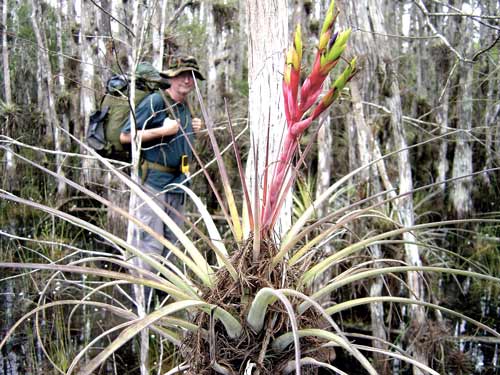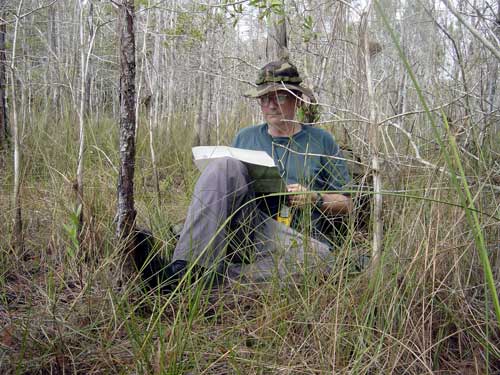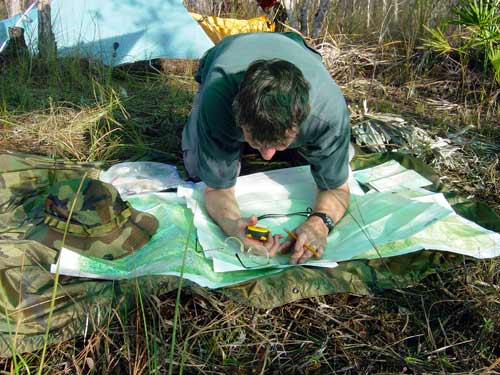Announcement: My online Land Navigation course includes four hours of video instruction, and two downloadable PDF books, all for about the same price as a typical paperback book. Get my Land Navigation course here.
How to Use a GPS
in the Wilderness
Knowing how to use a GPS in the wilderness is a lot different than knowing how to use your car's GPS.

Using GPS to Travel the Backcountry
While your car's GPS illustrates your travels along the twists and turns of highways and byways, showing you highway numbers and street names, in the backwoods where there are no roads and sometimes no trails, you have to make your own paths.
Add to that the fact that most backcountry travelers don't like to carry excess weight, meaning extra batteries are at a premium, so conserving battery power is important. Finally, few in the backwoods care to travel the wilderness on foot with a GPS receiver held in their outstretched hand or strapped to their shoulder, something one might have to do to allow the unit's antenna to pick up a signal.
A Practical Solution
One practical solution is to turn on the GPS only every now and then to get a bearing and distance to your destination. Then using a compass, follow the prescribed bearing as the terrain allows, not worrying too much about drifting off course.
Periodically, you can turn on your GPS to get an updated bearing and distance. In this manner, you can home in on your destination using the GPS only as necessary.

An Updated Bearing and Distance to the Destination is a Big Help
Using a GPS with a Topo Map
A GPS is a great tool to use with a topo map. If you get dislocated, your GPS can provide you with your lat/long, UTM or MGRS coordinates, allowing you to pinpoint your location on the map.
With GPS, you don't have to navigate using baselines and checkpoints, as you do with regular old map-and-compass navigation (be sure to see the pathfinding section of this web site). Your GPS can at any time tell you not only which way to go, but how far it is to your destination, and about how long it will take you to get there at your current pace.
I say "at any time," but that means at any time the GPS is working properly. If you lose the use of it for any reason (can't get a signal, misplace it, break it, batteries die, dog eats it up, whatever) you're back to doing things the old fashioned way, assuming you know how. If you don't know how, you could be in trouble.

Finding our exact location in the Everglades' Big Cypress Swamp is a snap with the GPS. Without it, it can be a challenge in the largely featureless watery wilderness.
Learn Map-and-Compass Navigation Too
My point? Learn map-and-compass navigation too. You're not a navigator if all you can do is follow the GPS.
With map-and-compass-only navigation a position fix is determined by carefully comparing terrain features around you with the terrain features shown on the map. With a GPS you get that fix automatically with few if any challenges.
Just as a calculator helps with math problems, a GPS helps with navigation, taking away some of the mental challenges involved. Anyone using a calculator who can't do math in their head must rely mindlessly on a machine. Likewise, anyone using a GPS who can't navigate with map and compass is mindlessly relying on a machine. Mindlessness in the backcountry can get you in trouble. Situational awareness demands that you have a good knowledge of navigation, GPS or no GPS.
Return from How To Use A GPS
to The Global Positioning System.
Return from How to Use a GPS to Home

